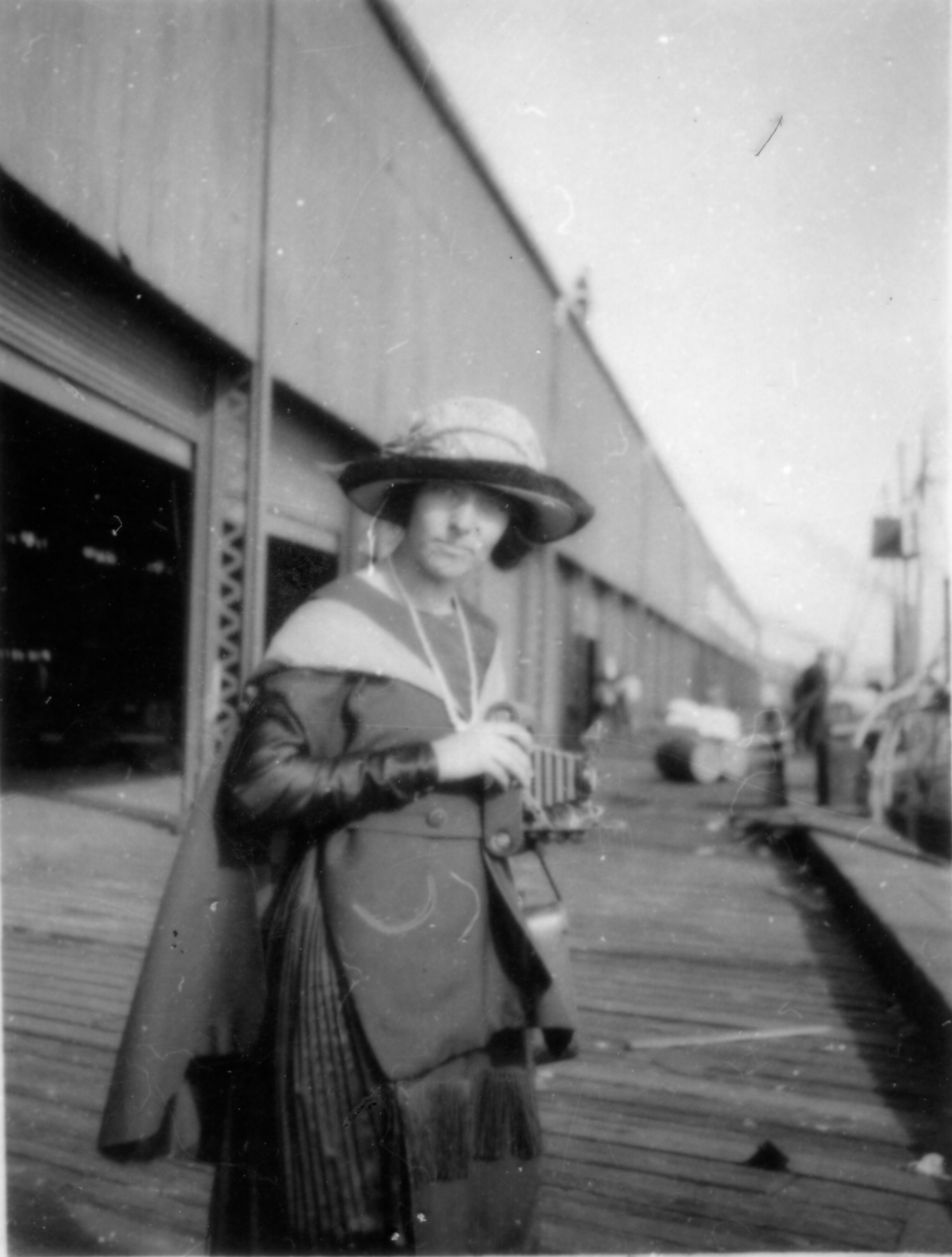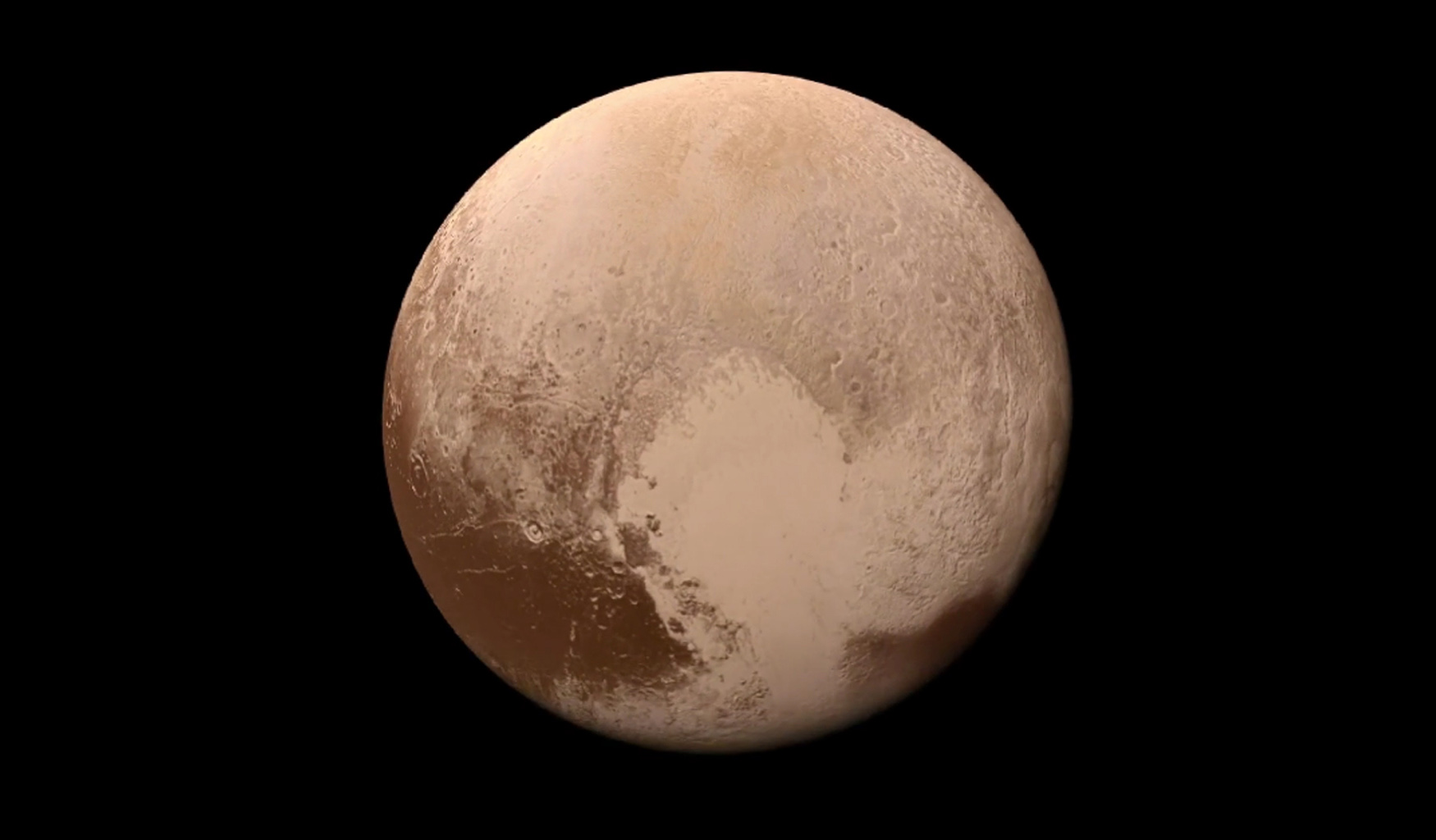Meet the unknown female mathematician whose calculations helped discover Pluto

Ninety years ago today (Feb. 18), astronomer Clyde Tombaugh gathered the data that proved the existence of what would eventually be dubbed Pluto — but it wouldn't have been possible, astronomers have since realized, without the calculations of a mathematician whom history has forgotten.
That mathematician was Elizabeth Williams, who worked for astronomer Percival Lowell, who first theorized the existence of a ninth planet. Lowell died before his successor, Tombaugh, finally spotted the elusive Pluto, but both men relied on calculations that Williams made. But the math got lost in the discovery it enabled, and so did Williams.
"There isn't much about her, which is very unfortunate," Catherine Clark, a doctoral student in astronomy at what's now known as Lowell Observatory, told Space.com. "There's so much about Percival Lowell and Clyde Tombaugh, and not so much about the computers who were actually doing the day-to-day calculations."
Related: Photos of Pluto and its moons
Those calculations were vital for the quest that eventually resulted in Tombaugh identifying Pluto. The logic motivating the search was based on observations of Neptune and Uranus. "Percival Lowell first noticed that the orbits of Neptune and Uranus were not exactly what they should have been," Clark said. When Lowell saw those differences, he knew that astronomy's map of the solar system was incomplete.
But finding the missing world required math — very complex math, and that's where Williams and other mathematicians came on the scene. Before the invention of calculators, so-called human computers — often women, since it was unglamorous work — did all the complex math that astronomers required, by hand. For Lowell's research, Williams calculated where he should look for how large of a missing object, all based on the discrepancies in the orbits of Neptune and Uranus.
Lowell never spotted Pluto, and the quest languished for a few years before Tombaugh picked up the work. And then, there it was: In 1930, those calculations paid off when Tombaugh caught sight of an object moving through the solar system. "There's a specific result that came of her calculations, so that's pretty exciting," Clark said.
Get the Space.com Newsletter
Breaking space news, the latest updates on rocket launches, skywatching events and more!
But Williams wasn't there to see it, Clark said. In 1922, Williams had married and Lowell's widow had fired her because she felt it inappropriate to employ a married woman. The pair took jobs at a Harvard observatory in Jamaica. In 1935, Williams was widowed herself and moved to New Hampshire, where she died in poverty.

Clark gave a presentation about Williams and her work at the 235th meeting of the American Astronomical Society in Honolulu last month based on her collaboration with Lowell Observatory historian Kevin Schindler. She told Space.com that what stood out to her about Williams' story was "understanding where women first came into this field and what they were allowed to do in the very beginning. And also just these crazy calculations that I don't think I could do by hand."
Williams herself was particularly talented in her work, Clark added. "On top of these incredible calculations, really advanced math that she was doing, she was also ambidextrous and writing simultaneously with both hands," she said. "She would write in cursive with her right hand while printing with her left."
Decades after Williams' work, of course, astronomers don't need humans to calculate orbital mysteries. "We rely so heavily on modern machine computers these days to do our work and we're able to do some really crazy awesome science with that," Clark said. But learning how astronomers worked in the past, she said, "really takes you back to the history of it and makes you grateful and thankful for these people, particularly these women, who were doing these calculations in the first place."
The erasure of Williams' work is also a reminder of the ways that women have been excised from the story of the history of science. "Even though they were in the shadows," Clark said, "[women] were contributing to this field."
- Pluto flyby anniversary: The most amazing photos from NASA's New Horizons
- Destination Pluto: NASA's New Horizons mission in pictures
- Pluto's heart: A cosmic Valentine in photos
Email Meghan Bartels at mbartels@space.com or follow her @meghanbartels. Follow us on Twitter @Spacedotcom and on Facebook.
OFFER: Save at least 56% with our latest magazine deal!
All About Space magazine takes you on an awe-inspiring journey through our solar system and beyond, from the amazing technology and spacecraft that enables humanity to venture into orbit, to the complexities of space science.
Join our Space Forums to keep talking space on the latest missions, night sky and more! And if you have a news tip, correction or comment, let us know at: community@space.com.

Meghan is a senior writer at Space.com and has more than five years' experience as a science journalist based in New York City. She joined Space.com in July 2018, with previous writing published in outlets including Newsweek and Audubon. Meghan earned an MA in science journalism from New York University and a BA in classics from Georgetown University, and in her free time she enjoys reading and visiting museums. Follow her on Twitter at @meghanbartels.
-
Mike I would hope that we will be able to put a name to the photograph. So many contributes to our understanding of Space, our Solar System and Space Flight itself have been lost to memory. No one thinks of the craftspeople that did the metal work on the launch vehicles, filled the honeycomb heat shield with indumescent caulk of the Women that wove the core rope memories that got Apollo to the moon.Reply
But on another note, and with all due respect to the IAU; We in America, DO NOT do Science by Roberts Rules of Order. Your motion and vote were out of order and therefore, Pluto, as pointed to by this, as yet, unknown young Woman math, IS and WILL remain a planet.
Thank you -
Dreamer1947 Mike,Reply
I would hope that people would read more than click bait titles before commenting on articles.
In this case, not even the reading the entire article is necessary.
Take a look at the line immediately below the photograph. -
Mike ReplyDreamer1947 said:Mike,
I would hope that people would read more than click bait titles before commenting on articles.
In this case, not even the reading the entire article is necessary.
Take a look at the line immediately below the photograph.
I took it upon myself to re read the article and for what ever reason, I do not recall having seen several of these paragraphs. I have no one to blame but myself, I am, obviously, guilty of of scanning the article as opposed to reading. That being said, I stand my the sentiment in my posting.
For what it is worth, I do thank you for pointing out what I did not see. -
Jem kinda sad that there are so many women and men that aren't put out there for everyone to know their accomplishments especially now that we are finding more of them nowReply -
chubsoda Reply
Her IQ must have been to at least 160. This is a good article to pass to young girls in grade school to encourage them to study the math and sciences so that one day, they may want to go into the Air Force, Navy, and study at University and work for NASA, or even the new Space Force Agency.Admin said:Pluto's discovery wouldn't have been possible, astronomers have realized, without the calculations of a mathematician whom history has forgotten.
Meet the unknown female mathematician whose calculations helped discover Pluto : Read more










